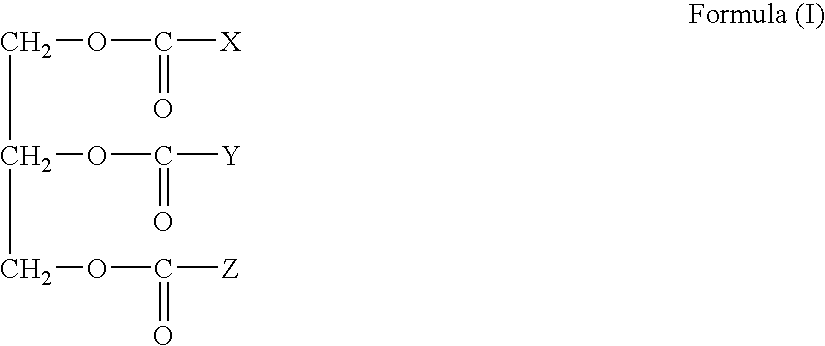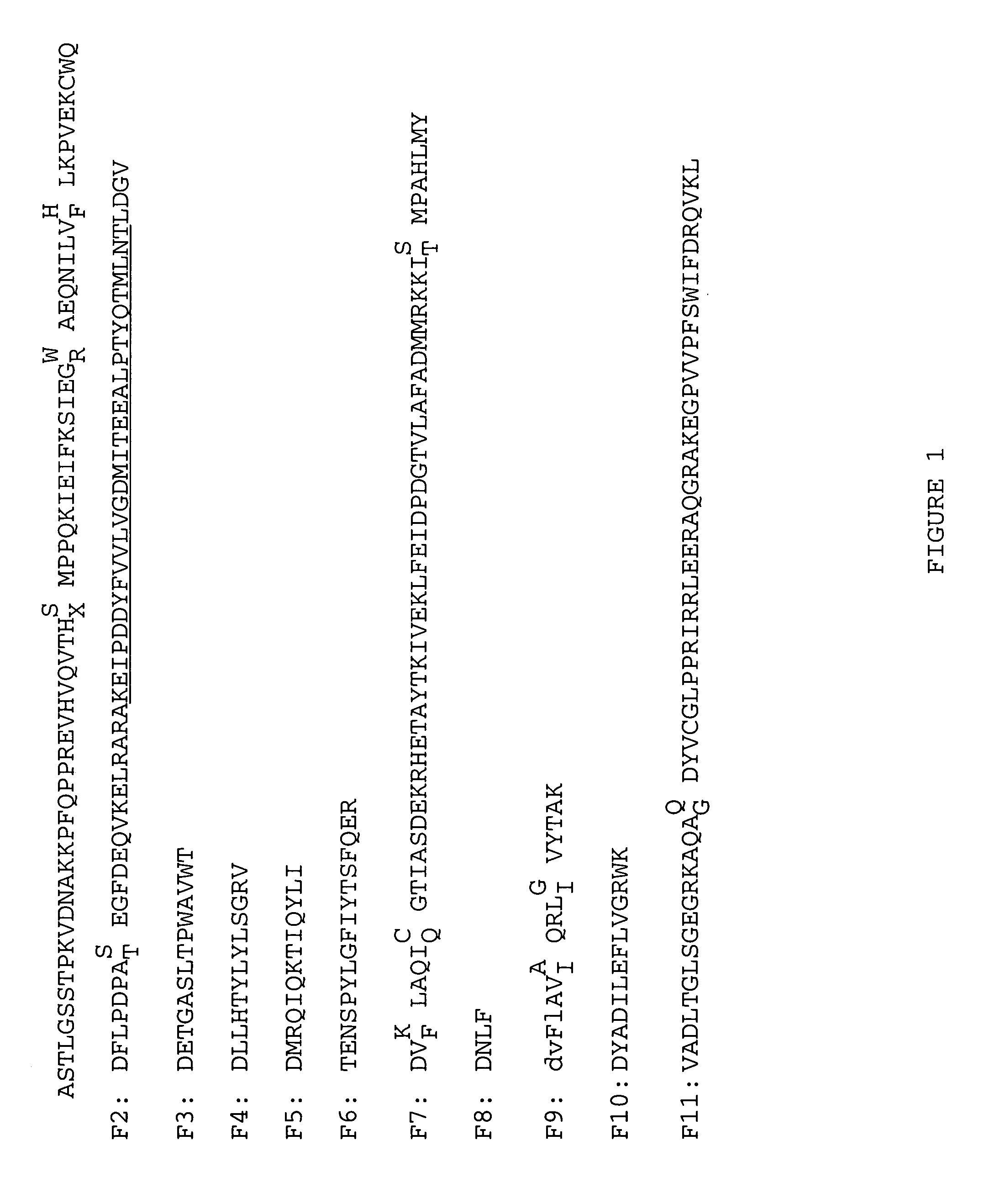Plant desaturases compositions and uses
a technology of desaturase enzyme and composition, applied in the field of desaturase enzyme, to achieve the effect of promoting activity and modifying the level of fatty acid saturation
- Summary
- Abstract
- Description
- Claims
- Application Information
AI Technical Summary
Problems solved by technology
Method used
Image
Examples
example 1
[0093]In this example, an initial purification of C. tinctorius (safflower) desaturase, following the method of McKeon and Stumpf (J. Biol. Chem. (1982) 257:12141–12142), is described.
[0094]Assay: In each of the following steps, the presence of the enzyme is detected radiometrically by measuring enzyme-catalyzed release of tritium from [9,10(n)-3H]stearoyl-ACP. Preparation of this substrate is described in “Materials” above.
[0095]The assay is performed by mixing 150 μl water, 5 ml dithiothreitol (100 mM, freshly prepared in water), 10 μl bovine serum albumin (10 mg / ml in water), 15 μl NADPH (25 mM, freshly prepared in 0.1M Tricine-HCl, pH 8.2), 25 μspinach ferredoxin (2 mg / ml Sigma Type III in water), 3 μNADPH:ferredoxin oxidoreductase (2.5 units / ml from Sigma), and 1 μl bovine liver catalase (800,000 units / ml from Sigma); after 10 min at room temperature, this mixture is added to a 13×100 mm screw-cap test tube containing 250 μl sodium 1,4-piperazinediethanesulfonate (0.1M, pH 6.0)...
example 2
[0103]In this example, a protocol for the final purification of C. tinctorius desaturase is described. Seeds are treated in accordance with Example 1.
[0104]Reverse-Phase HPLC: Fractions from the ACP-Sepharose column are pooled and applied to a Vydac C4 reverse-phase column (0.45×15 cm) equilibrated in 0.1% TFA, 7% acetonitrile. After a 10 min wash with 0.1% TFA, the column is eluted with a gradient of increasing acetonitrile (7%−70% v / v) in 0.1% TFA over a period of 45 min. The flow rate is 0.5 ml / min throughout. Eluting components are monitored by absorbance at 214 nm. Δ-9 desaturase elutes at about 42 min. (approximately 50% acetonitrile); the major contaminant protein remaining from ACP-affinity chromatography elutes at about 28 min. (approximately 30% acetonitrile). The substantially homogeneous desaturase, which is no longer active, is identified by SDS-PAGE, in which it exhibits a single band corresponding to a molecular weight of approximately 43 kD. The quantity of desaturas...
example 3
[0105]In this example, a protocol for the final purification of C. tinctorius desaturase is described. Seeds are treated in accordance with Example 1.
[0106]Reduction and Alkylation: Protein is precipitated out of the pooled fraction solutions recovered from the ACP-Sepharose column with 10% (w / v) trichloroacetic acid, washed with cold (−20° C.) acetone, and resuspended in 1 ml 500 mM Tris-HCl, pH 8.6, containing 6M guanidine-HCl, 10 mM EDTA, and 3.2 mM dithiothreitol. After 2 hours, 3.52 μmol [3H]iodoacetic acid (64 μCi / μmol, New England Nuclear) is added, and the reaction is allowed to proceed at room temperature in the dark for 2 hours, at which time the reaction is terminated by addition of 1 μl (15 μmol) β-mercaptoethanol. The sample is then re-precipitated with 10% (w / v) trichloroacetic acid, and the pellet again washed with cold (−20° C.) acetone and resuspended in Laemmli's SDS-sample buffer (Nature (1970) 227:680).
[0107]SDS-Polyacrylamide Gel Electrophoresis: The resulting s...
PUM
 Login to View More
Login to View More Abstract
Description
Claims
Application Information
 Login to View More
Login to View More - R&D
- Intellectual Property
- Life Sciences
- Materials
- Tech Scout
- Unparalleled Data Quality
- Higher Quality Content
- 60% Fewer Hallucinations
Browse by: Latest US Patents, China's latest patents, Technical Efficacy Thesaurus, Application Domain, Technology Topic, Popular Technical Reports.
© 2025 PatSnap. All rights reserved.Legal|Privacy policy|Modern Slavery Act Transparency Statement|Sitemap|About US| Contact US: help@patsnap.com



